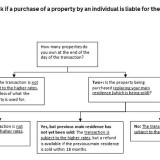Conveyancing for Sellers (Sale)
Here’s our simplified guide to conveyancing for sellers. We’ll run through the conveyancing process step by step. This guide is for residential property transfers (selling a home).
This process begins after you’ve negotiated the price and accepted an offer on your property.
Who does the conveyancing?
It is perfectly legal to do this yourself! But due to the heightened risks of DIY conveyancing, most buyers will require you to use a solicitor or a conveyancing firm.
So we recommend that you find a conveyancer and “instruct them” to do the conveyancing for you.
Conveyancing Process (for selling)
Step 1
Your solicitor/conveyancer will give you a number of detailed questionnaires about the property. (TA6 form, TA7 form, TA9 form, TA10 form, TA13 form.)
Your conveyancer will use this information to draw up a contract (this is known as the draft contract). This contract will be sent to the buyer and the buyers solicitor/conveyancer for approval.
Step 2
Negotiations over the draft contract.
The buyer and his conveyancer will look over and negotiate the contract with you and your conveyancer.
This includes choosing a date for the completion and checking what fixtures and fittings are included in the sale.
Your buyer’s conveyancer is entitled to raise enquiries with your conveyancer.
The buyer will have property searches done and survey your property. If anything major flags up – for example, the need for significant roof repairs – you may have to negotiate over who will fix this or even renegotiate over the sale price.
Step 3 – Redemption!
If you have a mortgage, you’ll need to request a redemption figure from your mortgage company (a redemption figure is just a statement detailing how much you need to pay off your mortgage). You’ll have to set a plan to pay off your mortgage.
Step 4 – Exchanging contracts
Before the exchange of contracts, a completion date must be decided upon by both parties, which is usually 4 to 12 weeks after the exchange. On this date the buyer is free to move in.
When that date is chosen, your solicitor or conveyancer will exchange the contracts for you. They’ll check that the buyer has an identical contract.
After the contracts are exchanged, you are legally bound to purchase the property. If the buyer doesn’t complete the purchase, you’ll keep the 10% deposit and you can also sue them.
After exchange, you can’t pull out, You can’t accept any other offers on the property.
Immediately after exchange you should receive the buyer’s deposit – usually 10% of the property price.
You own the property until completion day.
Step 5 – Transfer The Deeds
The buyers Conveyancer will lodge an application to the Land Registry to transfer the deeds into their name.
Step 6 – The Conveyancer fees.
Your Conveyancer will send you an invoice for their services. Hopefully you’ve chosen a good Conveyancer and the fees are fair, if they’re not… I’m sorry, but you’ll probably have to pay anyway. They’ll require payment before completing the transaction, not doing so could cost you the deal.
Step 7 – Completion Day
By now you should have received the money from the buyer. Once you confirm you’ve received the money the sale is completed.
You’ll need to give the keys to the buyer or to the estate agents for collection.
Done!







